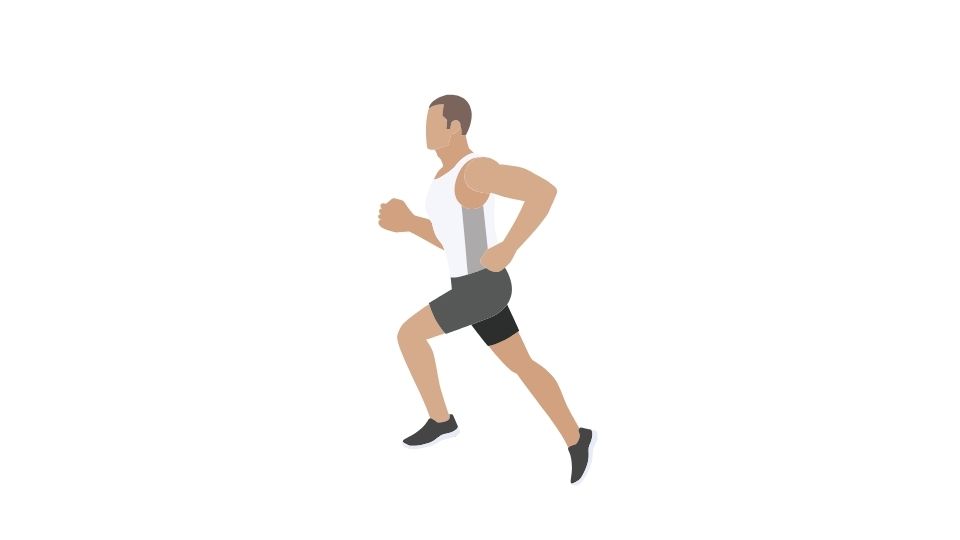Strength Training Routine for Track Sprinters

Wanna sprint faster? Forget just running around the track – smart strength training is the real secret weapon.
Let’s be real, every sprinter wants to be explosive off the blocks and maintain top-end speed. But randomly hitting the weight room won’t cut it. You need a strategic approach that develops the right muscle groups at the right time.
This guide breaks down exactly how to build a sprinter’s body that’s not just strong, but explosively powerful. Whether you’re a 100m specialist or running the quarter, I’ve got you covered.
Let’s turn those legs into literal springs.
Strength & Conditioning for Sprinters: The Complete Guide
Ever see those Olympic sprinters with legs that look like they could jump over a building? That’s not just genetics – that’s the result of smart strength training.
The goal isn’t to look like a bodybuilder. It’s about developing the specific type of power that translates directly to the track.
According to research from the Journal of Strength and Conditioning Research, sprinters who incorporate proper strength training see an average improvement of 5-8% in their race times. That’s the difference between first and last place at elite levels.
Key Muscle Groups Every Sprinter Should Target

Let’s start with the obvious – sprinting is primarily a lower body activity. But that doesn’t mean you should skip upper body day.
Lower Body Power Generators
- Glutes: Your butt muscles are the primary engines for acceleration and top-end speed
- Hamstrings: These prevent injuries AND help with powerful leg drive
- Quads: Critical for explosive starts and maintaining posture
- Calves: Provide that final push-off with each stride
Upper Body & Core Support
Think your arms don’t matter for sprinting? Think again. Your upper body:
- Balances your lower body movements
- Helps maintain rhythm and coordination
- Provides the counter-rotational force to keep you moving forward
Your core is essentially the power transfer station between your upper and lower body. A weak core = wasted leg power.
Beginner Strength Training Program

If you’re new to lifting weights, start here. This 3-day program builds the foundation you’ll need before moving to more advanced training:
Day 1: Lower Body Focus
- Back Squat: 3 sets of 8 reps
- Romanian Deadlift: 3 sets of 8 reps
- Weighted Step-ups: 3 sets of 10 reps per leg
- Standing Calf Raises: 3 sets of 12 reps
Day 2: Upper Body & Core
- Bench Press: 3 sets of 8-10 reps
- Barbell Row: 3 sets of 8-10 reps
- Push-ups: 3 sets of 10-15 reps
- Plank: 3 sets of 30-45 seconds
Day 3: Explosive Power
- Jump Squats: 4 sets of 6 reps
- Medicine Ball Throws: 4 sets of 6 reps
- Box Jumps: 4 sets of 5 reps
- Explosive Push-ups: 3 sets of 8 reps
Start with lighter weights and focus on perfect form. According to the National Strength and Conditioning Association, proper technique development in the first 4-6 weeks creates the neural patterns that will benefit you for years.
Advanced Strength Training Program
Ready to take it up a notch? This program is for experienced sprinters who have already built a solid strength base:
Day 1: Maximum Strength
- Trap Bar Deadlift: 5 sets of 3 reps (85% 1RM)
- Front Squat: 4 sets of 4 reps (80% 1RM)
- Weighted Pull-ups: 3 sets of 6 reps
- Heavy Sled Drags: 5 sets of 20 meters
Day 2: Explosive Power
- Power Clean: 5 sets of 3 reps (70-75% 1RM)
- Squat Jumps: 6 sets of 5 reps
- Depth Jumps: 4 sets of 5 reps
- Medicine Ball Rotational Throws: 4 sets of 5 per side
Day 3: Speed-Strength
- Olympic Lifting Variations: 5 sets of 3 reps
- Weighted Bounds: 4 sets of 10 meters
- Resisted Sprints: 6 sets of 20 meters
- Single-Leg Plyometrics: 4 sets of 6 reps per leg
Rest 2-3 minutes between sets for maximum power output. This isn’t bodybuilding – we’re training for explosive performance, not muscle failure.
Sprint-Specific Conditioning That Actually Works

Conditioning for sprinters is completely different than for distance runners. The goal is to improve recovery between high-intensity efforts without sacrificing power.
Hill Sprints: Nature’s Resistance Training
Hill sprints are possibly the most effective conditioning tool for sprinters. They:
- Force proper sprint mechanics
- Build tremendous acceleration power
- Strengthen ankles and calves
- Reduce impact forces compared to flat sprinting
Coach’s tip: Find a hill with approximately 15-30 degree incline and sprint for 10-30 seconds at maximum effort, then walk back down for recovery.
Resistance Training Sprints
Attach bands, sleds, or parachutes to create resistance during sprints. According to research from the Sports Performance Research Institute, this type of training can increase stride power by up to 25% when programmed correctly.
Start with lighter resistance (10-15% of body weight for sleds) and focus on maintaining proper mechanics.
Tempo Runs: The Recovery Secret
Tempo runs for sprinters aren’t the same as for distance runners. Think:
- 100-200m runs at 60-75% of maximum speed
- Perfect form maintenance
- 45-90 second recovery between reps
- 8-12 total reps
These maintain your aerobic system without interfering with power development and help clear lactate between hard training sessions.
Periodization: Timing Your Training for Peak Performance
The biggest mistake most sprinters make? Training the same way year-round. Your body needs different stimuli at different times.
Phase 1: General Preparation (8-12 weeks)
- Focus on building a base of strength
- Moderate volume, moderate intensity
- Technical development
- General conditioning
Phase 2: Specific Preparation (6-8 weeks)
- Transition to more explosive movements
- Increase weight room intensity
- Introduce more sprint-specific drills
- Begin competition-specific speed work
Phase 3: Competition Phase (8-12 weeks)
- Maximum power development
- Lower volume, higher intensity
- Maintenance of strength levels
- Focus on race modeling and top-end speed
Phase 4: Transition (2-4 weeks)
- Active recovery
- Address weaknesses
- Mental refreshment
- Prepare for next training cycle
This approach follows principles outlined by the International Association of Athletics Federations and has been used by Olympic medalists worldwide.
Avoiding Common Sprinter Injuries

Let’s be honest – sprinting puts enormous stress on your body. The forces involved are incredible.
Hamstring Protection
The hamstrings are the most commonly injured muscle group in sprinters. Prioritize:
- Nordic Hamstring Curls: 2-3 sets of 6-8 reps, 2x weekly
- Proper warmup before explosive training
- Adequate recovery between hard sessions
Back & Core Stability
Many sprinters develop back issues from the high-impact nature of the sport. Combat this with:
- Anti-rotation core exercises
- Proper lifting technique
- Hip mobility work
- Regular maintenance stretching
Injury Prevention Circuit
Do this circuit 2-3 times weekly as part of your warmup:
- Single Leg RDLs: 10 per side
- Copenhagen Planks: 20 seconds per side
- Glute Bridges: 15 reps
- Ankle Mobility: 10 per direction, each ankle
Final Thoughts
Strength training for sprinters isn’t optional – it’s essential. The difference between good and great often comes down to who has the most effective strength program.
Remember these key points:
- Focus on explosive power, not bodybuilding
- Train specifically for sprinting demands
- Periodize your training throughout the year
- Maintain proper mechanics in all exercises
- Recovery is when improvements actually happen
Now get to work! Your competition is probably reading this too.

